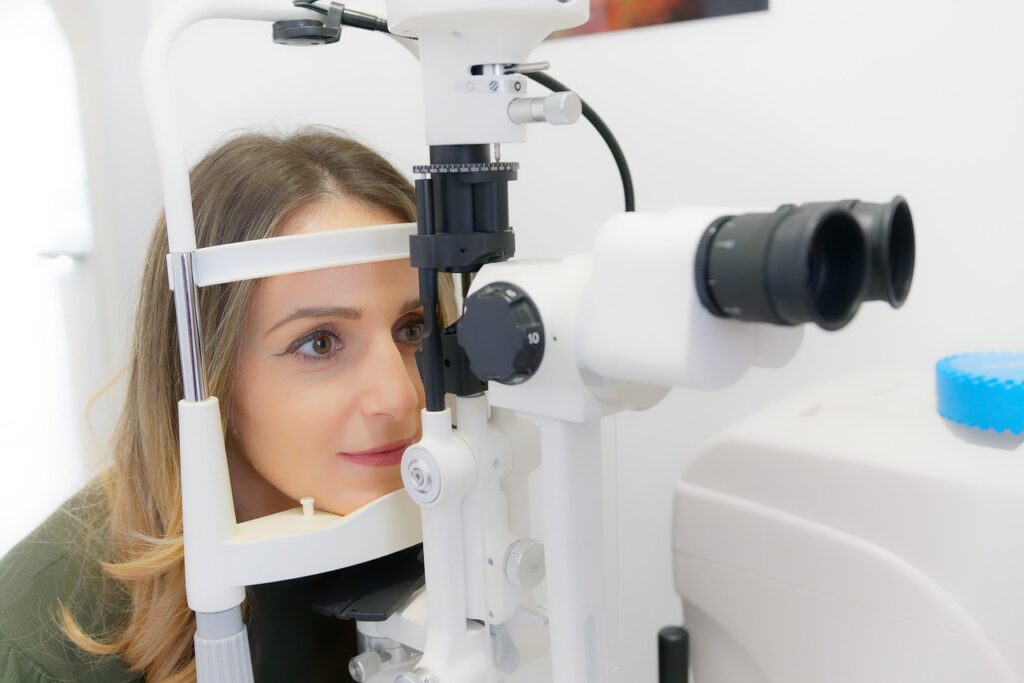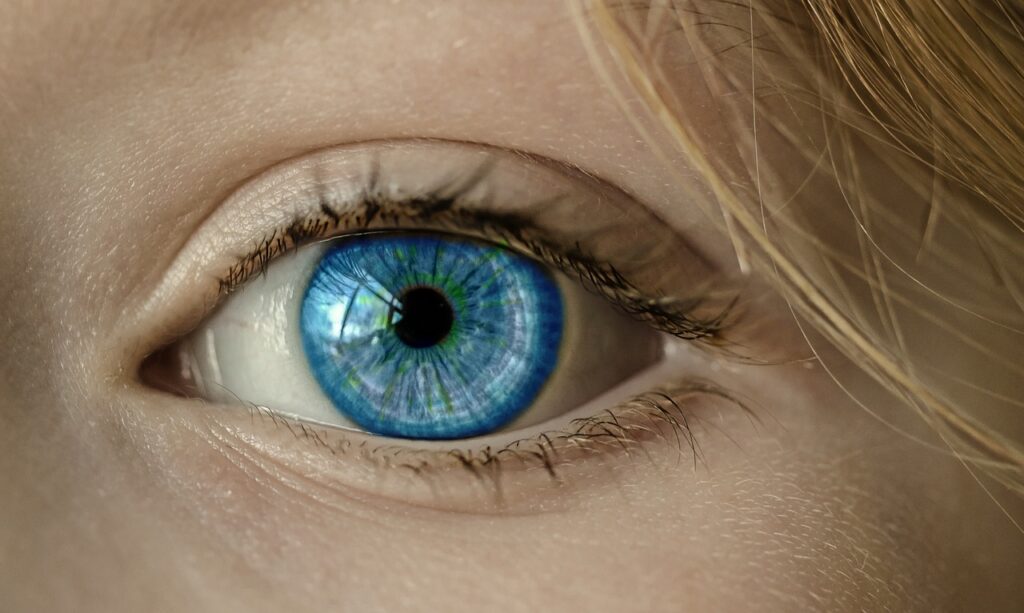
In our increasingly hyper-connected world, technology has woven itself into the very fabric of our daily lives. From the moment we wake up and check our smartphones to the late-night hours spent binging our favorite shows, screens are ever-present companions. This constant digital engagement, while offering unparalleled convenience and connection, often comes at a hidden cost: the subtle, yet persistent, deterioration of our precious eyesight.
It’s a topic many of us tend to shrug off, perhaps feeling a twinge of guilt after a marathon gaming session or a particularly long workday staring at spreadsheets. We might experience a fleeting headache or some blurry vision, only to dismiss it as a momentary inconvenience. But what if these seemingly minor discomforts are actually early warning signs of deeper, more insidious damage being done to our eyes?
As savvy digital natives and enthusiasts, we often pride ourselves on staying ahead of the curve, embracing innovation with open arms. Yet, ironically, some of our most ingrained tech habits are secretly undermining one of our most vital senses. It’s time to pull back the curtain on these silent vision stealers and equip ourselves with the knowledge to protect our eyes in this digital age. Let’s dive into the first half of these critical habits, because understanding them is the first step towards better eye health.
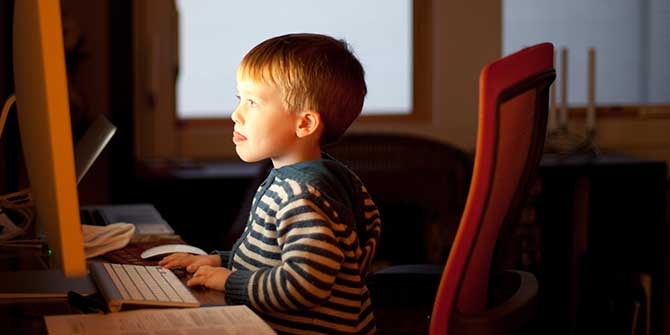
1. **Too Much Screen Time: The Silent Strain on Your Vision**Let’s be honest, who isn’t guilty of this one? Whether it’s scrolling through endless feeds, powering through a work project, or getting lost in a captivating series, our eyes are constantly glued to screens. This isn’t just a casual glance; it’s an intense, prolonged act of visual concentration. The small fonts, the bright backlights, and the fixed distance all conspire to put your eye muscles into overdrive, forcing them to work harder and longer than they were naturally designed to do. This unrelenting demand leads to a pervasive modern malady known as digital eye strain, also often referred to as computer vision syndrome.
The consequences of this intense focusing marathon are far more uncomfortable than you might imagine. Digital eye strain manifests itself through a range of unwelcome symptoms that can really disrupt your day. You might find your eyes feeling uncomfortably dry, as if they haven’t had a proper blink in ages, or perhaps a persistent irritation that makes you want to rub them (and we’ll get to why *that’s* a bad idea later!). Even worse, that sharp, clear vision you normally rely on can become frustratingly blurred, making it difficult to read or even recognize faces clearly. It’s not just a momentary inconvenience; these symptoms can accumulate, making prolonged screen use feel like a real chore.
The good news is that combating digital eye strain doesn’t require ditching your devices entirely, though a digital detox never hurt anyone. A couple of simple adjustments can make a world of difference. First, take a moment to evaluate your screen’s brightness. Is it glaringly bright in a dim room, or so dark that you’re squinting to see? Optimizing your screen’s brightness to match your ambient lighting can significantly reduce the effort your eyes have to expend, providing immediate relief and preventing that “strained” feeling. It’s a quick fix that pays dividends for your comfort.
Beyond brightness, there’s a golden rule that every digital warrior should commit to memory: the 20-20-20 rule. This easy-to-remember guideline is your secret weapon against eye fatigue. Here’s how it works: for every 20 minutes you spend looking at a screen, take a 20-second break to look at something 20 feet away. This simple act allows your eye muscles to relax and refocus on a different distance, breaking the cycle of intense close-up work. Implementing the 20-20-20 rule into your routine can dramatically cut down on strain, keeping your eyes feeling fresher and your vision clearer, even during the longest of screen sessions.
Read more about: Lights, Camera, Silence: 12 Famous Duos Who Said ‘Cut!’ to Friendship After Filming Wrapped
2. **Ignoring Regular Eye Checkups: The Hidden Threat of Silence**It’s a common misconception that if your vision feels fine, your eyes must be healthy. We tend to prioritize visits to the doctor when we feel unwell, but our eyes often operate on a different, more insidious timeline. Many serious eye conditions are silent predators, developing stealthily without announcing their presence through obvious symptoms. This can lead to a false sense of security, making it easy to delay or even skip those crucial regular eye checkups that truly safeguard our long-term vision.
Consider conditions such as glaucoma and macular degeneration – these are not minor inconveniences, but rather progressive diseases that can lead to irreversible vision loss or even blindness if left untreated. The truly alarming aspect is that they often begin to develop slowly, making their insidious progress entirely unnoticeable in their early stages. You won’t wake up one morning with a sudden, dramatic change in your sight; instead, the damage accumulates quietly, often affecting peripheral vision first, which our brains are incredibly good at compensating for until significant damage has occurred.
This is precisely where the power of regular eye exams comes into play. These checkups are far more than just tests to see if you need new glasses; they are comprehensive health assessments for your eyes. An optometrist or ophthalmologist can detect the subtle early indicators of conditions like glaucoma by checking intraocular pressure, or spot the initial signs of macular degeneration through retinal examination, long before you would ever notice any changes yourself. Catching these issues at their nascent stage is absolutely critical, as early detection opens the door to timely interventions that can slow or even halt the progression of damage, effectively preventing devastating long-term consequences.
So, even if your vision seems perfectly clear, even if you can read the smallest text on your phone without a hitch, a routine eye checkup is an indispensable component of proactive health management. As we age, our eyes naturally undergo changes, and certain risks can increase. These regular visits ensure that your eyes remain robust and healthy throughout your life, acting as a crucial preventative measure against unforeseen future complications. Think of it as an essential tune-up for your most vital sense, guaranteeing that your windows to the world stay crystal clear for years to come.
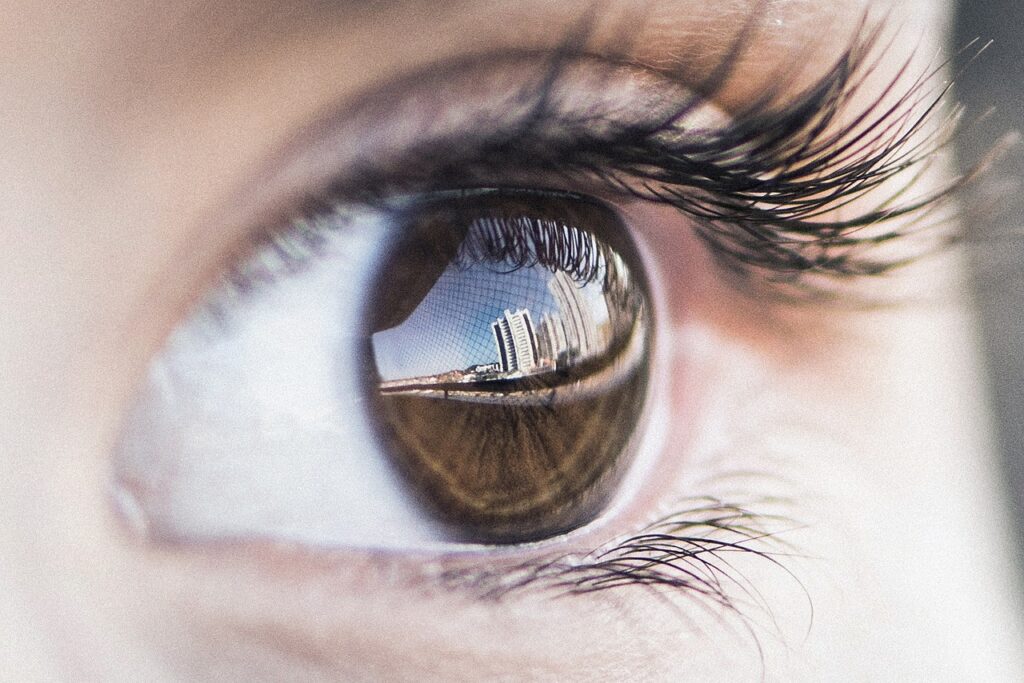
3. **Not Blinking Enough: The Overlooked Key to Eye Comfort**Here’s a habit many of us don’t even realize we have, yet it plays a significant role in our daily eye comfort and health: not blinking enough. In the fast-paced, digitally driven world we inhabit, our blink rate often plummets without us even realizing it. Whether it’s the intense concentration required for navigating complex spreadsheets, the enthralling grip of a social media feed, or even the subtle physiological response to stress, our eyes are often held unnaturally wide open, staring intently. This reduction in blinking might seem trivial, but it has profound implications for the delicate surfaces of our eyes, leading to uncomfortable and potentially damaging outcomes.
The act of blinking is far more than just an involuntary reflex; it’s a meticulously designed biological function essential for maintaining optimal eye health. Every time we blink, a thin, protective film of tears is spread evenly across the surface of our eyeballs. This tear film is a marvel of natural engineering, responsible for keeping our eyes beautifully moist, washing away tiny irritants, and delivering vital oxygen and nutrients to the cornea. When our blink rate decreases, this essential process is interrupted. The tear film evaporates too quickly, leaving the eye exposed, dry, and vulnerable, akin to a parched landscape yearning for rain.
The consequences of insufficient blinking are often immediate and undeniably unpleasant. You’ll start to experience that tell-tale sensation of dry, gritty eyes, feeling as though there’s something perpetually stuck under your eyelid. This dryness can quickly escalate to a burning or stinging feeling, making any kind of visual task, especially screen-related ones, incredibly uncomfortable. Your eyes might also appear noticeably red and feel fatigued, even after a seemingly short period of screen use. It’s a vicious cycle where discomfort leads to more strain, which further exacerbates the problem, eroding your overall eye health and comfort.
Fortunately, this is one of the easiest habits to correct with a little conscious effort. The next time you find yourself engrossed in your phone or deep into a work task on your laptop, take a moment to intentionally blink. Try a series of slow, deliberate blinks to fully re-moisturize your eyes. Make it a mental note, a mini-break within your longer breaks. Actively trying to blink more often throughout the day, particularly during extended screen sessions, is a simple yet incredibly effective way to keep your eyes hydrated, refreshed, and protected from the damaging effects of dryness. Your eyes will thank you for this tiny, yet mighty, act of self-care.

4. **Uncontrolled Diabetes: A Silent Threat to Your Retina**While some vision-ruining habits are directly related to our digital lifestyle, others stem from broader health conditions that we might not immediately associate with our eyes. One such pervasive and potentially devastating condition is diabetes. It’s a systemic disease that, when not properly managed, can wreak havoc throughout the body, and unfortunately, our eyes are far from immune to its destructive capabilities. The core issue lies in how diabetes impacts blood sugar levels, and subsequently, the delicate vascular network that nourishes our vision.
The continuous fluctuations and chronically high blood sugar levels associated with uncontrolled diabetes can have a corrosive effect on the tiny, intricate blood vessels that supply blood to the retina. The retina, that crucial light-sensitive tissue at the back of our eye, is vital for clear vision, converting light into electrical signals that are sent to the brain. When these minuscule blood vessels become damaged – weakening, leaking, or even completely blocking – the retina is deprived of the oxygen and nutrients it desperately needs to function. This progressive damage is known as diabetic retinopathy, a condition that is tragically a leading cause of vision impairment and blindness globally.
Diabetic retinopathy often starts subtly, much like other serious eye conditions. In its early stages, you might not experience any noticeable symptoms, which makes regular eye checkups even more critical for individuals with diabetes. However, as the disease progresses, it can manifest in various ways: blurred vision, fluctuating vision, dark or empty spots in your field of sight, or even the sudden onset of floaters, which are tiny specks or strings that appear to drift across your vision. Without timely diagnosis and intervention, this damage escalates, leading to severe and often irreversible vision loss or complete blindness, fundamentally altering one’s quality of life.
The good news amidst this serious threat is that diabetic retinopathy is largely preventable and manageable through diligent health practices. The cornerstone of prevention lies in meticulously controlling your blood sugar levels. Adhering to your doctor’s recommendations for diet, exercise, and medication is paramount. Furthermore, consistent and regular comprehensive eye examinations, specifically tailored for diabetic patients, are non-negotiable. These specialized checkups allow ophthalmologists to closely monitor the health of your retinal blood vessels, detect any early signs of damage, and initiate treatment strategies, such as laser therapy or injections, before vision loss becomes profound. Proactive management truly is the key to preserving your sight when living with diabetes.
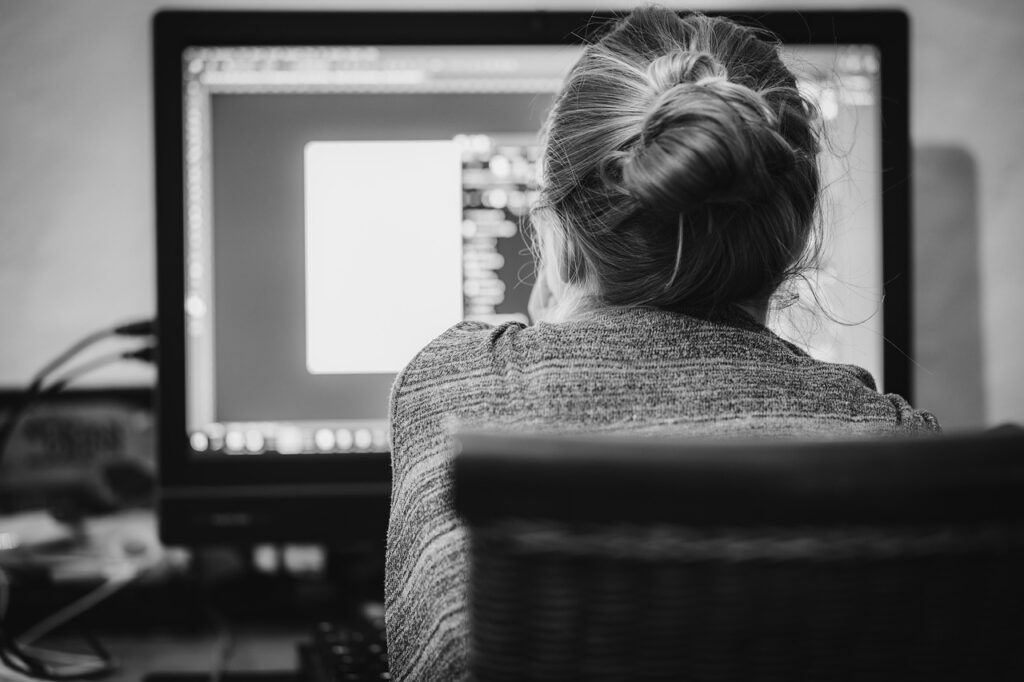
5. **Using Screens In The Dark: A Harsh Reality for Your Eyes**You’ve probably been there a million times: the house is quiet, the lights are out, and you’re comfortably nestled in bed, phone in hand, scrolling through social media or catching up on the latest news. It feels like a perfectly harmless, even cozy, end to a long day. But let’s be real, this common tech habit—using a bright screen in a completely dark room—is secretly one of the most taxing things you can do to your precious peepers. The stark, jarring contrast between that intense digital glow and your dim surroundings forces your eyes into an exhausting, unwelcome struggle, demanding constant, uncomfortable adjustments.
Here’s the visual science behind it: when your room is dark, your pupils naturally dilate to let in as much ambient light as possible, optimizing your vision for low-light conditions. Your eyes are preparing for a serene, dark environment. But then, a bright screen, a veritable spotlight, blasts intense, focused light directly into those wide-open pupils. This creates an immediate and extreme clash. Your eyes are desperately trying to adapt to the darkness while simultaneously processing a concentrated source of light from a very close distance, leading to an incessant battle of adaptation that your delicate eye muscles are perpetually losing.
The physiological impact of this relentless visual tug-of-war doesn’t just manifest as minor discomfort; it triggers a cascade of genuinely unpleasant symptoms that can seriously disrupt your well-being. You’ll quickly notice significant eye strain, making your eyes feel tired, achy, and heavy, as if they’ve run a marathon. Persistent headaches, often throbbing right behind your eyes or across your forehead, are a common and unwelcome companion to this habit. What’s more, this extreme contrast can temporarily blur your vision, making it challenging to read or focus clearly even after you’ve finally put your device away, severely diminishing your overall visual comfort and clarity.
Beyond the immediate discomfort, regularly exposing your eyes to this harsh light disparity can contribute to a chronic state of digital eye strain, also known as computer vision syndrome. Over time, this accumulated stress can lead to increased sensitivity to light, a greater propensity for dry eyes, and even a worsening of existing refractive errors. It’s not just about that fleeting headache; it’s about the cumulative wear and tear on your visual system that quietly builds up, making everyday screen use feel like an increasingly arduous task and potentially impacting your long-term eye health.
Fortunately, preventing this particular peril is surprisingly straightforward and doesn’t require a complete digital detox. If late-night screen time is an absolute must, never subject your eyes to total darkness. Start by significantly lowering your screen’s brightness to a more gentle level, or better yet, consistently enable your device’s built-in ‘night mode’ or ‘dark mode’ settings, which often shift colors to warmer tones and reduce blue light. Introducing even a dim ambient light in the room, like a small bedside lamp, can dramatically soften the harsh contrast, making your screen sessions far less taxing and much more forgiving on your precious peepers.
6. **Spending Too Much Time Indoors: Your Eyes Need the Great Outdoors**In our hyper-modern, digitally immersed world, the default setting for many, especially children and teenagers, has become an indoor existence. We’re working in climate-controlled offices, studying in libraries, gaming in living rooms, and binge-watching shows from the comfort of our couches. It might not seem like a direct tech habit, but our increasingly sedentary and indoor-centric lifestyles are inextricably linked to our digital consumption, and perhaps surprisingly, have a profound and often overlooked impact on the proper development and long-term health of our vision. It turns out that your eyes, much like the rest of your body, truly thrive on a healthy and regular dose of the great outdoors.
This isn’t merely about getting some fresh air or enjoying a change of scenery; it’s deeply rooted in a biological imperative for proper eye development, especially during those crucial formative years of childhood and adolescence. Our eyes require sufficient exposure to natural daylight—not just any light, but the specific broad-spectrum wavelengths and intensity of natural outdoor light—to develop properly and maintain optimal structure. Indoor lighting, even the brightest varieties, simply cannot replicate these essential conditions. Without adequate time spent outside, the risk of developing and progressing myopia, or nearsightedness, significantly increases, becoming a pervasive and growing concern globally.
Think about the dynamic visual experience that unfolds when you’re outside compared to being confined indoors. When you’re outdoors, your eyes are constantly and effortlessly shifting focus across a vast and varied range of distances. You might gaze at a distant mountain peak, then observe a bird fluttering in a nearby tree, and then marvel at the intricate details of a flower just beneath your feet. This rich, multi-distance visual engagement is absolutely essential for healthy eye growth and development. It actively helps to stretch and strengthen your eye muscles, encourages the eye to elongate correctly, and provides a much-needed, natural break from the relentless, fixed close-up work that screens and indoor tasks predominantly demand.
The scientific community has increasingly underscored the profound protective effect of outdoor time against the onset and progression of myopia. Researchers suggest that natural light stimulates the release of dopamine in the retina, a neurotransmitter believed to inhibit eye elongation, which is a key factor in nearsightedness. Furthermore, the sheer act of looking at distant objects regularly forces the eye’s focusing muscles to relax, preventing the accommodative spasm that often results from prolonged near work. It’s a powerful, natural prescription for vision health that our ancestors instinctively followed and that we, in our modern world, often neglect at our peril.
Embracing and prioritizing more outdoor time is a remarkably simple yet incredibly potent preventative measure, particularly vital for younger eyes that are still undergoing significant development. Aim for at least one to two hours of outdoor exposure each day. Regular outdoor activities, whether it’s a walk in the park, playing sports, or simply reading under a tree, can make a monumental difference in helping to slow the progression of nearsightedness and bolster overall eye health. So, go ahead, step outside, and let your eyes soak in the natural, varied, and healthy visual landscape they so desperately crave and fundamentally need to thrive.
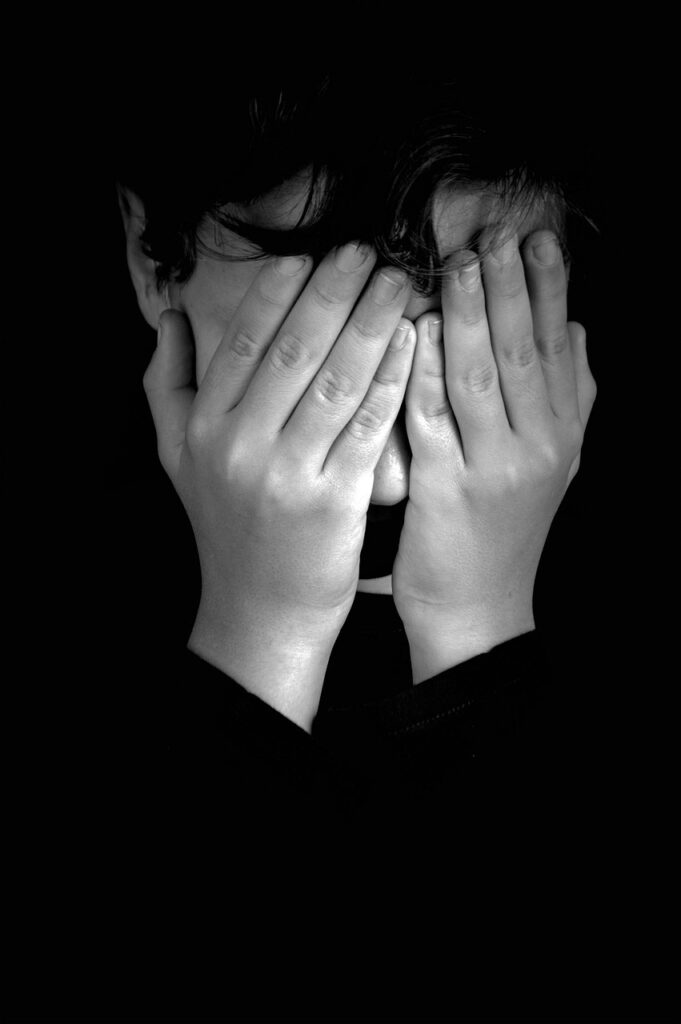
7. **Rubbing Your Eyes: The Harmful Habit You Can’t Resist**It’s an almost universal and often subconscious reflex, a small act of self-comfort that many of us perform without a second thought. When your eyes feel tired, unexpectedly itchy, or persistently irritated, the instinctive urge to reach up and give them a good rub can seem incredibly satisfying, offering an immediate, albeit fleeting, sense of relief. But here’s the stark, often uncomfortable truth that eye care professionals want you to hear loud and clear: this seemingly innocent and habitual act of rubbing your eyes can actually do far more insidious harm than any perceived good, subtly but surely endangering the delicate structures of your most vital sense.
The pressure exerted on your eyes when you rub them, even if you perceive it as gentle, can be surprisingly substantial and profoundly damaging. The delicate corneal tissue, which forms the clear, dome-shaped outer layer at the very front of your eye and is critical for focusing light, is simply not designed to withstand such repetitive friction and blunt force. Repeated rubbing can cause microscopic abrasions on the cornea’s surface, leading to heightened irritation, redness, and potentially making your eyes feel even more uncomfortable and vulnerable. It’s a classic example of a seemingly quick fix creating a much deeper, longer-term problem that compromises ocular integrity.
Beyond this direct physical damage, rubbing your eyes introduces a host of other undesirable risks and potential complications. Your hands, despite frequent washing, are constantly exposed to countless germs, bacteria, and allergens throughout the day, transforming them into veritable breeding grounds for infection. Bringing these contaminated hands into direct contact with your sensitive eyes is essentially an open invitation for bacterial conjunctivitis (pink eye) or other unwelcome infections. Moreover, if you suffer from seasonal allergies or chronic dry eyes, rubbing can actually worsen the irritation by releasing more histamines and inflammatory mediators, intensifying that maddening itch-scratch cycle and prolonging your discomfort.
For those who rely on contact lenses, rubbing your eyes poses an immediate and tangible threat. The friction can easily dislodge a properly placed contact lens, causing it to move out of position, fold, or even fall out entirely. More alarmingly, vigorous rubbing with a contact lens in can create friction between the lens and your cornea, potentially leading to corneal abrasions or even ulcers, which are painful and can severely impact your vision. This type of trauma can not only delay healing but also introduce infectious agents beneath the lens, turning a simple irritant into a serious medical emergency.
Furthermore, chronic and vigorous eye rubbing, particularly over many years, has been scientifically linked to the development and progression of more serious, sight-threatening long-term conditions. One such condition is keratoconus, where the cornea progressively thins and begins to bulge outward into a cone-like shape, severely distorting vision and often requiring specialized rigid contact lenses, corneal cross-linking procedures, or even a corneal transplant in advanced cases. The cumulative stress from rubbing weakens the corneal collagen fibers, making them less resistant to the internal pressure of the eye. So, the next time your eyes feel bothersome, resist that primal urge. Instead, reach for preservative-free lubricating eye drops, apply a cool compress, or simply identify and address the root cause of the irritation. Your eyes will undoubtedly thank you for this gentler, safer, and ultimately more protective approach to their care.
**Conclusion: Safeguarding Your Sight in a Digital Age**
So there you have it: a deep dive into some of the worst tech and lifestyle habits that are secretly, insidiously undermining your most precious sense—your vision. From the relentless, fatiguing strain of screens glowing brightly in a dark room to the often-overlooked yet critical necessity of adequate outdoor exposure, and even the seemingly benign but ultimately damaging act of rubbing tired eyes, our daily routines are constantly, and often unconsciously, shaping the trajectory of our eye health. It’s undeniably clear that preserving our eyesight in this omnipresent, digitally driven world demands far more than just occasional thought or fleeting concern; it requires a conscious, informed, and ongoing commitment to proactive self-care.
But please, don’t despair! The truly empowering news amidst these warnings is that simply being aware of these detrimental habits is, by far, the most powerful and transformative first step toward positive change. Each small, mindful adjustment you integrate into your daily life—whether it’s deliberately blinking more frequently, choosing to step outside for a refreshing breath of natural air, or simply adopting a gentler, more considered approach when your eyes feel bothered—contributes exponentially to the betterment of your long-term eye health. Your vision is an irreplaceable gift, a vibrant window to the breathtaking and inspiring world around you. Let’s collectively commit to nurturing it, fiercely protecting it, and ensuring it stays crystal clear and resilient for all the incredible digital innovations and real-world wonders yet to come. It’s time to be proactive, be smart, and wholeheartedly give our magnificent eyes the diligent care and profound respect they unequivocally deserve.

